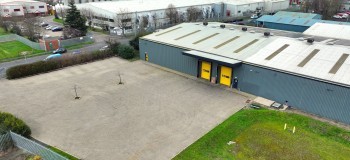09/01/2019
News

In this article you'll find a glossary of some commonly used terms when buying or selling assets at auction, along with their definitions.
AS IS/ AS FOUND/ AS SEEN/ ALL FAULTS / AF
This is a declaration that the asset will be sold as it appears, including any faults or imperfections
BULK LOTS
These are auction lots that contain multiple items. This may be where there are a number of similar items, that have been collated into a single lot. Always fully check the detail regarding the lot title and description before you bid, as in some cases your bid price will be multiplied by the number of items in the lot.
BUYER’S PREMIUM
The buyer's premium refers to the additional charge that is paid by the winning bidder. The buyer's premium is charged by the auctioneer to cover administrative expenses. The buyer’s premium goes directly to the auction house and not to the seller. VAT/Sales Tax is usually included and is broken down in the invoice.
CONDITION
This is a written description of an asset’s condition and is usually provided in the lot description. If you are unsure about the description, or have any questions, simply use the ‘Ask a question’ button on the lot listing page.
CURRENT BID
The current bid is the leading online bid. To be the highest bidder, you will need to bid an amount higher than this.
EXTENSION
Sometimes you will see that an end time on a lot may be extended by upto 10 minutes. This is happening because whenever there is a new bid, the countdown is extended before the final hammer - in a similar way to a real auction.
MAX BID
This is the maximum amount you would be happy to pay for a lot. You can set the maximum amount you wish to pay, and then we bid on your behalf. You don’t even have to watch the auction online. Bidding would only be as much as you would need at a live auction.
NEGOTIATED SALE ("PRIVATE TREATY SALE")
OPENING PRICE
The opening price is the amount that the bidding will start for the sale of the lot. You will need to bid on or above the opening price to take part.
RESERVE
This is the lowest price that the seller has agreed the lot can be sold for. This protects the seller from the lot being sold below its value.
TENDER SALE
A Sale by Tender is a type of auction where an asset will be put up for sale with a deadline for bids. Interested parties have until that date to submit their best offer, without having seen anyone else's bidding activity.
TIMED AUCTION
Timed auctions have an auctioneer who sets the time that the lots end, and the size of the increments – there’s just a bidding window and whoever bids highest wins (as long as the reserve’s met). You’ll know it’s a timed auction as the end time will be displaced on the lot page.
TIMED BID
A bid made during a timed auction. You can place a timed bid between the start and end of a timed auction. If you are the highest bidder at the end of the auction (and have met the reserve price), you will win the lot.
TRADING ASSET
A trading asset is where we are selling a business or operation that is still effectively trading. Examples may be a care home, where we may be selling the business itself along with the property that the business is operating in. These may be sold separately and end up with an entity that owns the care home business (i.e. the clients and contracts), and a different separate entity that owns the property.
Get in touch with the Eddisons team
Please contact us for more details and information




